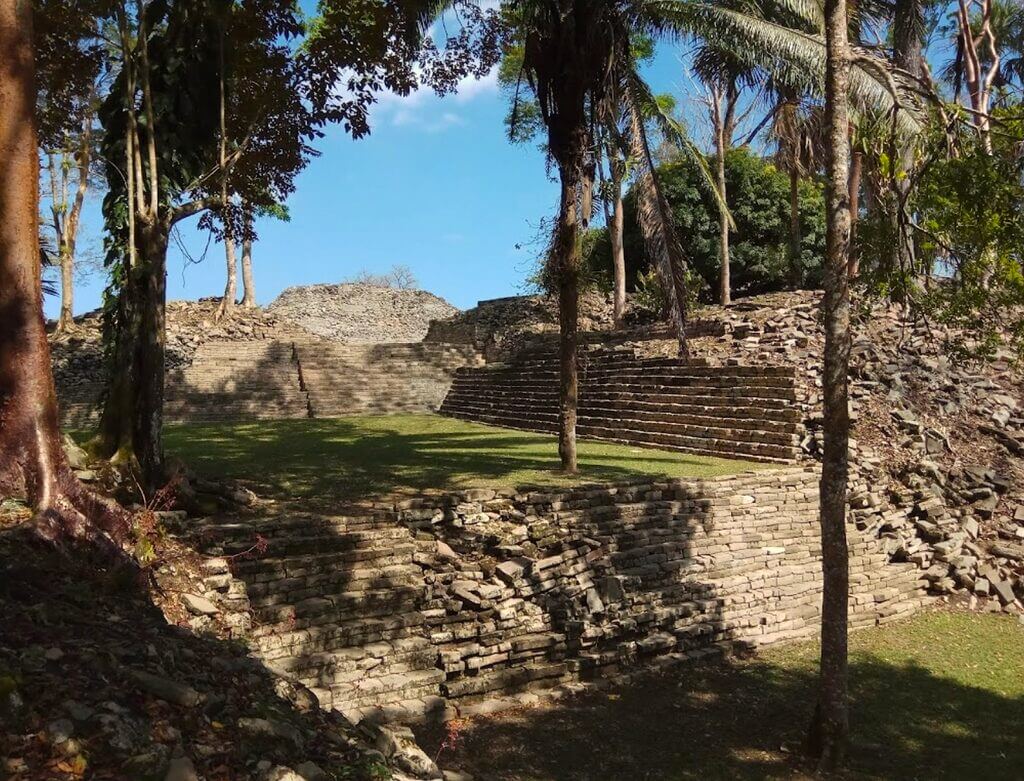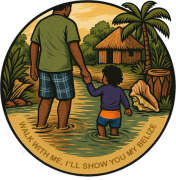The Maya of Southern Belize — Living Traditions Beyond the Ruins
Walk With Me… I’ll Show You My Belize.
When most travelers picture the Maya of Belize, they think of towering temples in the west or famous sites in the north. But in the deep south—beyond the highways and tourist maps—there are communities where Maya heritage is not just remembered. It’s lived every day.
I’ve seen this for myself, from my school days to my travels across Toledo District. Southern Belize holds stories that deserve to be told.
🏞️ Where the Rainforest Meets Tradition
Southern Belize is a landscape of green hills, wide rivers, and villages tucked among cacao farms and forest clearings.
Here, you’ll find the Q’eqchi’ and Mopan Maya, descendants of ancient civilizations whose cities once spread across this region. While places like Lubaantun and Nim Li Punit hold the stones of the past, it’s the living villages that show how culture endures.
🏛️ Ancient Cities of the South
✅ Lubaantun
- Known for its unique dry-stone construction—no mortar holds the massive blocks in place.
- Believed to be a major trading and ceremonial center.
- Famously linked to the legend of the Crystal Skull, though most archaeologists consider that a modern myth.
✅ Nim Li Punit
- Named “Big Hat” for the enormous headdress carved on one of its stelae.
- Holds some of the tallest carved monuments in Belize.
- Less visited, offering a quiet connection to the past.
Read more about Nim Li Punit
✅ Uxbenka
- One of the earliest known Maya settlements in the country.
- Set high on a hill with views stretching over the jungle canopy.
- Rarely crowded and rich in archaeological discoveries.
🗺️ See this on the map
Open the Interactive Map »

🌱 Life in the Villages
I still remember going to school at Independence High, which was the largest secondary school in the area back then. Maya students would come from villages as far as past Bladen, bringing with them languages, stories, and ways of life that were different from my own but felt familiar over time.
One of the most talked-about villages back then was San Pedro Columbia. Like many communities in southern Belize, Columbia found ways to make ends meet—including cultivating cannabis—a reality that sparked as many rumors as it did respect for the community’s resilience. It was simply part of everyday conversations at the time, a reminder that people here have always adapted to whatever circumstances they faced.
Today, cannabis remains regulated under Belizean law. While possession of up to 10 grams for personal use was decriminalized in 2017, cultivation and distribution without a license are still illegal. Visitors should always respect local regulations and understand that enforcement and attitudes can vary by area.
Driving south today feels like stepping into a place where time moves at its own pace. Near the unofficial border, you still see Maya families in touch with old ways—cutting their own boards, tending small gardens, pigs roaming free down the road. At first, the sight of livestock wandering past the houses surprised me, but soon I realized this is simply life here.
⚡ Change on the Horizon
These villages may look unchanged, but little signs of modern life are everywhere:
- Houses that once used kerosene lanterns now have small solar panels on the roof.
- Young people have smartphones, even if reception is patchy.
- New roads have connected once-isolated communities to the rest of the country.
But even with these changes, the culture remains strong. The Maya languages are still spoken in homes. Traditional farming continues. Ceremonies and crafts carry forward the memory of generations.
🌿 Few Tourists, Many Stories
This is an area very few visitors ever see. Most come to Belize for the reef, the western ruins, or the beach towns. Southern Belize is quieter—harder to reach, slower to modernize, and richer in stories that don’t fit into a brochure.
That’s why I love it. Here, you can glimpse what Belize looked like before highways and hotels. You can see how the Maya adapted, resisted, and continued.
💬 A Personal Reflection
When I drive through southern Belize today, I think about my schoolmates traveling hours each morning to get an education. I think about the old houses built from hand-cut boards, the free-roaming pigs, and the new solar panels catching the same sun that once fed the cornfields of their ancestors.
I think about the Maya traders who once moved cacao and jade along these same hills and rivers—and the families who still live here, carrying that legacy forward.
Walk with me, and I’ll show you a Belize that’s quieter, older, and more enduring than most people ever know.
